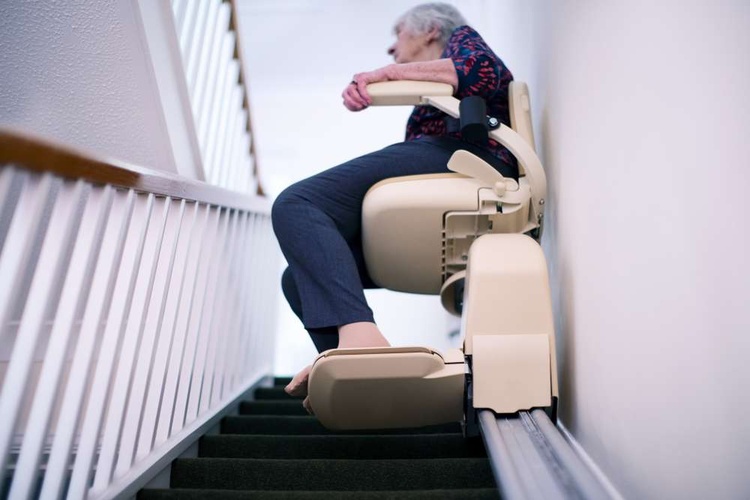Explore helpful tips on fall prevention options for seniors
Falls represent one of the most significant health risks facing older adults today, with millions of seniors experiencing fall-related injuries annually. Understanding effective prevention strategies can help maintain independence while reducing the risk of serious accidents. From mobility aids to home modifications, various tools and techniques work together to create safer environments for aging adults.

Explore helpful tips on fall prevention options for seniors
Fall prevention becomes increasingly important as we age, with statistics showing that one in four adults over 65 experiences a fall each year. The good news is that many falls are preventable through proper planning, the right equipment, and strategic home modifications. By taking proactive steps, seniors can significantly reduce their risk while maintaining the independence they value.
Discover Essential Fall Prevention Tools
Mobility aids serve as the foundation of effective fall prevention strategies. Walking canes provide additional stability for those with mild balance issues, while rollators offer four-wheel support with built-in seats for rest breaks. Standard walkers without wheels work well for individuals who need maximum stability but can lift the device with each step. Grab bars installed in bathrooms, hallways, and near stairs create secure handholds throughout the home. Non-slip mats in bathtubs and shower areas prevent dangerous slips on wet surfaces.
Understand Safe Movement Strategies
Proper movement techniques can dramatically reduce fall risk in daily activities. Rising slowly from seated or lying positions helps prevent dizziness and loss of balance. Taking time to steady yourself before walking, especially after sitting for extended periods, allows your body to adjust. Wearing appropriate footwear with good traction and support makes a significant difference in stability. Avoiding rushing and taking deliberate, measured steps helps maintain control during movement. Regular exercise programs focusing on balance, strength, and flexibility improve overall stability and confidence.
Explore Practical Home Adjustments
Home modifications create safer environments without major renovations. Removing throw rugs and securing loose carpeting eliminates common tripping hazards. Installing adequate lighting throughout the home, including motion-activated lights for nighttime navigation, improves visibility. Keeping frequently used items within easy reach reduces the need for stretching or climbing. Ensuring clear pathways free from clutter, electrical cords, and furniture creates safer walking routes. Adding contrasting tape to step edges makes stairs more visible and safer to navigate.
Learn About Popular Aids for Seniors
Various assistive devices cater to different mobility needs and preferences. Traditional walkers provide maximum stability but require upper body strength to lift between steps. Wheeled walkers or rollators offer easier movement with hand brakes for control and often include storage baskets. Walking sticks and canes come in adjustable heights and various handle styles for comfort. Shower chairs and bath benches allow safe bathing while seated. Raised toilet seats and toilet safety frames provide additional support in the bathroom.
| Product Type | Provider/Brand | Cost Estimation |
|---|---|---|
| Standard Walker | Drive Medical | $40-80 |
| Rollator Walker | Hugo Mobility | $100-300 |
| Adjustable Cane | Carex Health | $15-40 |
| Grab Bars (Set) | Moen Home Care | $25-75 |
| Shower Chair | Medline Industries | $50-150 |
| Bath Safety Rails | Vive Health | $30-90 |
Prices, rates, or cost estimates mentioned in this article are based on the latest available information but may change over time. Independent research is advised before making financial decisions.
Maintain Independence with Expert Guidance
Professional assessments help identify specific fall risks and appropriate solutions. Occupational therapists can evaluate home safety and recommend modifications tailored to individual needs. Physical therapists design exercise programs to improve strength, balance, and coordination. Healthcare providers can review medications that might affect balance or cause dizziness. Vision and hearing specialists address sensory impairments that contribute to fall risk. Working with these professionals ensures comprehensive fall prevention strategies that support continued independence.
Implementing fall prevention measures requires a comprehensive approach that addresses both personal factors and environmental hazards. The combination of appropriate mobility aids, safe movement practices, home modifications, and professional guidance creates multiple layers of protection. While the initial investment in safety equipment and home adjustments may seem significant, the cost pales in comparison to the potential expenses and complications of fall-related injuries. Taking proactive steps today helps ensure safer, more confident movement for years to come.
This article is for informational purposes only and should not be considered medical advice. Please consult a qualified healthcare professional for personalized guidance and treatment.


